This article was co-authored by Joel Giffin, PT, DPT, CHT. Dr. Joel Giffin is a Doctor of Physical Therapy and the Founder of Flex Physical Therapy in New York, New York. With over 15 years of experience as a Certified Hand Therapist (CHT), Dr. Giffin treats the whole body and specializes in rehabilitation of the hand and upper extremities. He has treated Broadway theater performers backstage at shows such as The Lion King, Sleep No More, Tarzan, and Sister Act. Flex Physical Therapy also specializes in occupational and pelvic floor therapy. Dr. Giffin earned his Master’s degree in Physical Therapy with honors from Quinnipiac University and received his Doctor of Physical Therapy (DPT) degree with distinction from Simmons College. He is a member of the American Physical Therapy Association and the American Society of Hand Therapists.
There are 12 references cited in this article, which can be found at the bottom of the page.
wikiHow marks an article as reader-approved once it receives enough positive feedback. This article received 11 testimonials and 90% of readers who voted found it helpful, earning it our reader-approved status.
This article has been viewed 355,397 times.
Trigger finger (also called stenosing tenosynovitis) occurs when inflammation builds up within a tendon of a finger and causes it to involuntarily flex.[1] If the condition is severe, the finger gets stuck in a bent position and sometimes makes a snapping sound when forcibly straightened -- sort of like cocking the trigger of a gun, which explains the name. People whose job requires repetitive gripping are at higher risk of developing trigger finger, as are those with arthritis or diabetes. The treatment varies depending on severity and cause, which is why an accurate diagnosis is important.
Steps
Managing Trigger Finger at Home
-
1Take a break from repetitive tasks. In most cases, trigger finger is caused by repetitive gripping of the hand, or flexing of the thumb or forefinger. Those who are farmers, typists, industrial workers or musicians are particularly susceptible because they constantly repeat certain finger and thumb movements. Even smokers can get trigger thumb from repeatedly using their lighters. As such, stop (or limit) the repetitive action that's inflaming your finger if you can and maybe the pain and contracture in your finger will resolve itself.
- Explain the situation to your boss and maybe they will give you different tasks to perform at work.
- Because trigger finger is often caused by overuse, you want to limit the amount you use that finger when doing things like typing, texting, carrying, cooking, and cleaning. Every time it triggers, it can get more irritated.[2]
- Trigger finger is more common in women.[3]
-
2Apply ice to your finger.[4] The application of ice is an effective treatment for essentially all minor musculoskeletal injuries, including trigger finger.[5] Cold therapy (ice wrapped in a thin towel or frozen gel packs) should be applied to the inflamed tendon (it usually looks like a little bump or nodule in the lower part of your finger or in the palm of your hand, and will be tender to touch) in order to reduce the swelling and pain. Ice should be applied for 10-15 minutes every hour, then reduce the frequency as the pain and swelling subside.
- Compressing the ice against your finger / hand with a bandage or elastic support will also help control the inflammation, but don't tie it too tight because complete restriction of blood flow could cause more damage to your finger.
Advertisement -
3Take over-the-counter NSAIDs.[6] Non-steroidal anti-inflammatories (NSAIDs) such as ibuprofen, naproxen or aspirin can be short-term solutions to help you deal with any pain or inflammation in your finger. Dosage for adults is usually 200-400 mg, by mouth, every 4-6 hours. Keep in mind that these medications can be hard on your stomach, kidneys and liver, so it's best not to use them for more than 2 weeks at a stretch. You can develop gastritis or ulcers from NSAID overuse.
- Signs and symptoms of trigger finger typically include: stiffness (particularly in the morning), a clicking feeling as you move your finger, a tender nodule at the base of the affected finger and difficulty straightening the finger.[7]
-
4Try stretching the contracted tendon. Stretching the affected finger might reverse the condition, especially if you address the problem during its early stages. Place your affected hand palm down on a table and slowly extend your wrist by putting more weight onto the table -- hold for 30 seconds and repeat 3-5x daily. Alternatively, grab onto your affected finger and slowly extend it while lightly putting pressure on and massaging the inflamed nodule (if you see one).
- Soaking your hand in a warm Epsom salt bath for 10-15 minutes prior to stretching may help ease the tension and pain in the affected tendon.[8]
- You can also try holding the affected finger straight, then taking your other hand and blocking your knuckles at the first joint. Then, bend your fingers down just from the top two joints of your finger.[9]
- Hand massage by a physical therapist may be best.
Receiving Medical Treatment for Trigger Finger
-
1Get fitted for a finger splint. Your doctor may have you wear a finger splint at night to keep the affected finger in an extended position while you sleep, which helps stretch it out. Splint use may be needed for up to 6 weeks.[10] Splinting also helps prevent you from curling your fingers into a fist while you sleep, which can exacerbate trigger finger.
- During the day, take the splint off periodically to perform finger stretches or light massages.
- Alternatively, you can make your own by buying an aluminum finger splint from a pharmacy and attaching it with water resistant medical tape.
-
2Get a corticosteroid injection. An injection of steroid medication near or into the tendon's sheath can quickly reduce inflammation and allow normal, unrestricted movement of your finger again. Corticosteroid injection is considered to be the first-line treatment of choice for trigger finger.[11] Typically two injections are needed (3-4 weeks apart) and it's effective in up to 90% of patients with trigger finger.[12] The most common preparations used are prednisolone, dexamethasone and triamcinolone.
- Potential complications of corticosteroid injections include infection, bleeding, tendon weakening, local muscle atrophy and nerve irritation / damage.
- If corticosteroid injections fail to provide adequate resolution, then surgery should be considered.
-
3Get the finger operated on. The primary indications for getting a trigger finger surgically repaired is if it doesn't respond to any of your home remedies or splinting and/or steroid injections, or if the finger is severely bent and irreducibly locked.[13] There are two main types of surgery: open trigger finger release surgery and percutaneous trigger finger release surgery.[14] Open surgery involves making a small incision near the base of your affected finger and cutting open the constricted section of tendon sheath. Percutaneous release involves inserting a needle into the tissue around the affected tendon and moving it around in order to break apart the constriction.
- Finger surgery is typically done as an outpatient procedure using local anesthesia.
- Possible complications from surgery include local infection, allergic reaction to anesthesia, nerve damage and chronic swelling / pain.
- The recurrence rate is only about three percent, but surgery may be less successful in diabetics.
Troubleshooting Complications and Differentiating Other Conditions
-
1Treat the underlying infection or allergic reaction. Sometimes a localized infection can either mimic trigger finger or actually cause tendon contraction. If the joints or muscles of your finger become red, warm and significantly inflamed over the course of a few hours or days, then seek immediate medical care because these signs indicate a possible infection or allergic reaction to an insect bite. Treatment consists of incision and drainage, warm saltwater soaks and sometimes oral antibiotics.[15]
- Bacteria are the most common infections of the hand and usually the result of untreated cuts, puncture wounds or ingrown fingernails.
- Allergic reactions to insect bites are relatively common, especially to those of bees, wasps and spiders.
-
2Treat the joint dislocation. A dislocated finger joint can sometimes mimic trigger finger because it's also painful and causes the finger to look bent or crooked. Joint dislocations are typically caused by blunt trauma, as opposed to repetitive strain, so they require immediate medical assistance to reset or realign the finger joint. Following realignment, a dislocated finger is treated much the same as trigger finger in terms of rest, anti-inflammatories, ice and splinting.
- An X-ray of the hand can readily identify a dislocated or fractured finger.
- Other health professionals (aside from your family doctor) who can treat a dislocated finger include osteopaths, chiropractors and physiotherapists.
-
3Combat the arthritis. Sometimes the cause of an inflamed, contracted finger tendon is due to a bout or flare-up of rheumatoid arthritis or gout.[16] Rheumatoid arthritis is thought to be an autoimmune condition that aggressively attacks the body's joints, and it requires the use of strong prescription anti-inflammatories and immune system suppressors to combat. Gout is an inflammatory condition caused by uric acid crystal deposits in joints (typically in the feet, but also in the hands), which can affect related tendons and lead to contracture.
- Rheumatoid arthritis commonly affects the hands / wrists and can grossly disfigure the joints with time.
- Your doctor may send you for a blood test to check for markers of rheumatoid arthritis.
- To reduce the risk of gout, cut down on purine-rich foods such as organ meats, seafood and beer.
Expert Q&A
Did you know you can get expert answers for this article?
Unlock expert answers by supporting wikiHow
-
QuestionHow do I make home treatment splints?
 Chris M. Matsko, MDDr. Chris M. Matsko is a retired physician based in Pittsburgh, Pennsylvania. With over 25 years of medical research experience, Dr. Matsko was awarded the Pittsburgh Cornell University Leadership Award for Excellence. He holds a BS in Nutritional Science from Cornell University and an MD from the Temple University School of Medicine in 2007. Dr. Matsko earned a Research Writing Certification from the American Medical Writers Association (AMWA) in 2016 and a Medical Writing & Editing Certification from the University of Chicago in 2017.
Chris M. Matsko, MDDr. Chris M. Matsko is a retired physician based in Pittsburgh, Pennsylvania. With over 25 years of medical research experience, Dr. Matsko was awarded the Pittsburgh Cornell University Leadership Award for Excellence. He holds a BS in Nutritional Science from Cornell University and an MD from the Temple University School of Medicine in 2007. Dr. Matsko earned a Research Writing Certification from the American Medical Writers Association (AMWA) in 2016 and a Medical Writing & Editing Certification from the University of Chicago in 2017.
Family Medicine Physician
-
QuestionI have trigger thumb. How much medication should I take for pain relief?
 Chris M. Matsko, MDDr. Chris M. Matsko is a retired physician based in Pittsburgh, Pennsylvania. With over 25 years of medical research experience, Dr. Matsko was awarded the Pittsburgh Cornell University Leadership Award for Excellence. He holds a BS in Nutritional Science from Cornell University and an MD from the Temple University School of Medicine in 2007. Dr. Matsko earned a Research Writing Certification from the American Medical Writers Association (AMWA) in 2016 and a Medical Writing & Editing Certification from the University of Chicago in 2017.
Chris M. Matsko, MDDr. Chris M. Matsko is a retired physician based in Pittsburgh, Pennsylvania. With over 25 years of medical research experience, Dr. Matsko was awarded the Pittsburgh Cornell University Leadership Award for Excellence. He holds a BS in Nutritional Science from Cornell University and an MD from the Temple University School of Medicine in 2007. Dr. Matsko earned a Research Writing Certification from the American Medical Writers Association (AMWA) in 2016 and a Medical Writing & Editing Certification from the University of Chicago in 2017.
Family Medicine Physician
Warnings
- Eating cherries and increasing your consumption of vitamin C are natural methods for combating gout attacks.⧼thumbs_response⧽
- The time of recovery from surgery for trigger finger depends upon the severity of the condition and the technique used, but 2 weeks is likely a good guideline.⧼thumbs_response⧽
- Trigger thumb in infants should be operated on because they are more likely to develop a fixed flexion deformity as they get older.⧼thumbs_response⧽
References
- ↑ http://www.mayoclinic.org/diseases-conditions/trigger-finger/basics/definition/con-20043819
- ↑ Joel Giffin, PT, DPT, CHT. Physical Therapist. Expert Interview. 9 September 2020.
- ↑ http://www.mayoclinic.org/diseases-conditions/trigger-finger/basics/definition/con-20043819
- ↑ Joel Giffin, PT, DPT, CHT. Physical Therapist. Expert Interview. 9 September 2020.
- ↑ https://myhealth.alberta.ca/Health/aftercareinformation/pages/conditions.aspx?hwid=uh3464
- ↑ Joel Giffin, PT, DPT, CHT. Physical Therapist. Expert Interview. 9 September 2020.
- ↑ http://www.mayoclinic.org/diseases-conditions/trigger-finger/basics/symptoms/con-20043819
- ↑ http://www.mayoclinic.org/diseases-conditions/trigger-finger/basics/treatment/con-20043819
- ↑ Joel Giffin, PT, DPT, CHT. Physical Therapist. Expert Interview. 9 September 2020.
- ↑ https://www.mayoclinic.org/diseases-conditions/trigger-finger/diagnosis-treatment/drc-20365148
- ↑ http://emedicine.medscape.com/article/1244693-treatment#d10
- ↑ https://orthoinfo.aaos.org/en/diseases--conditions/trigger-finger
- ↑ http://emedicine.medscape.com/article/1244693-treatment
- ↑ https://www.nhs.uk/conditions/trigger-finger/treatment/
- ↑ http://www.aafp.org/afp/2003/1201/p2167.html
- ↑ http://emedicine.medscape.com/article/1244693-differential
About This Article
To cure trigger finger, which is caused by repeated gripping motions, make sure to take breaks from repetitive tasks, like typing on the computer. Additionally, try applying ice to the inflamed tendon to reduce pain or swelling. You can also stretch the contracted tendon by holding onto the affected finger and slowly extending it while putting pressure on the sore area. If home remedies don’t work, ask your doctor about wearing a finger splint to stretch out the area while you sleep. For more tips from our Medical co-author, including how to get a corticosteroid injection for trigger finger, keep reading!










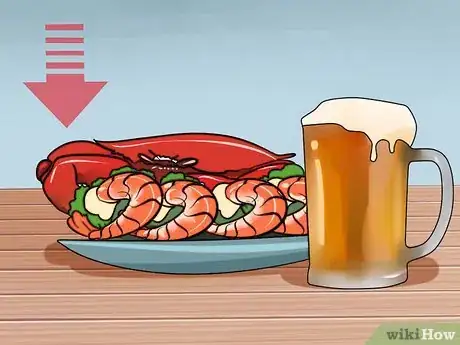
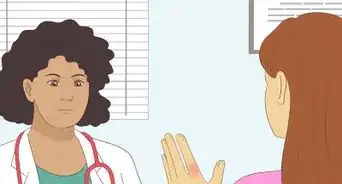
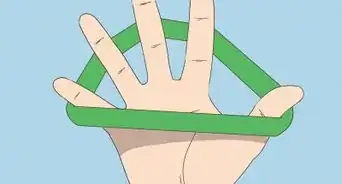
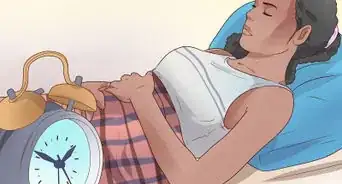


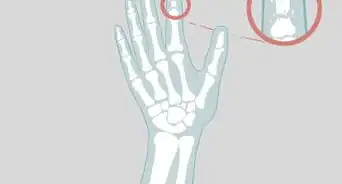
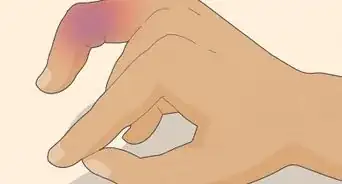
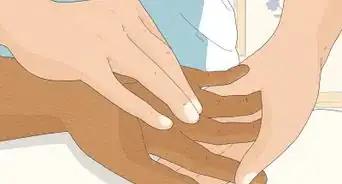

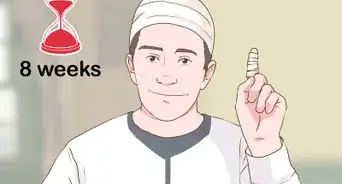


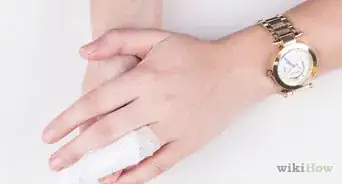












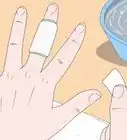



































Medical Disclaimer
The content of this article is not intended to be a substitute for professional medical advice, examination, diagnosis, or treatment. You should always contact your doctor or other qualified healthcare professional before starting, changing, or stopping any kind of health treatment.
Read More...